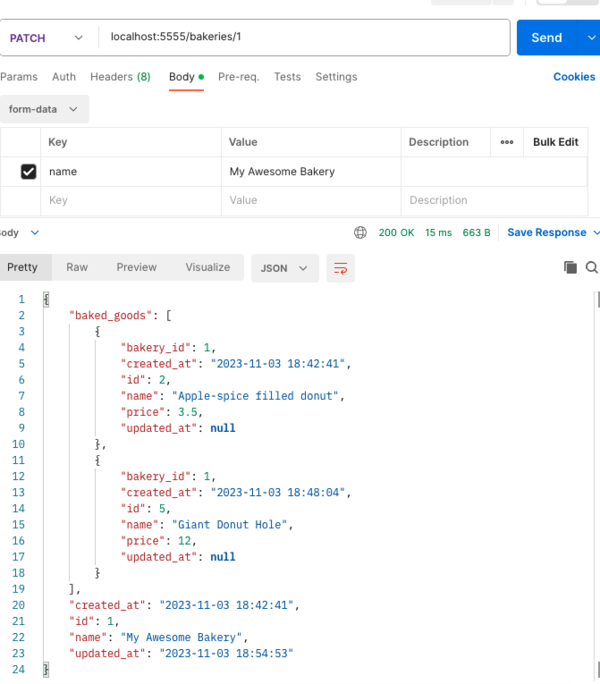- Build an API to handle GET, POST, PATCH, and DELETE requests.
- Application Programming Interface (API): a software application that allows two or more software applications to communicate with one another. Can be standalone or incorporated into a larger product.
- HTTP Request Method: assets of HTTP requests that tell the server which actions the client is attempting to perform on the located resource.
GET: the most common HTTP request method. Signifies that the client is attempting to view the located resource.POST: the second most common HTTP request method. Signifies that the client is attempting to submit a form to create a new resource.PATCH: an HTTP request method that signifies that the client is attempting to update a resource with new information.DELETE: an HTTP request method that signifies that the client is attempting to delete a resource.
This is a test-driven lab. Run pipenv install to create your virtual
environment and pipenv shell to enter the virtual environment. Then run
pytest -x to run your tests. Use these instructions and pytest's error
messages to complete your work in the server/ folder. Make sure to test your
routes in Postman as you progress.
$ pipenv install
$ pipenv shellIn this application, we'll be working on a familiar JSON API to get a list of bakeries and their baked goods. We have two models, bakeries and baked goods, in a one-to-many relationship. The migrations are already set up. Here's a reminder of what the ERD for these tables looks like:
You can pick up where we left off by entering the following commands:
$ cd server
$ flask db upgrade
$ python seed.py
$ python app.pyEdit server/app.py to support the following requests:
- Define a
POSTblock inside of a/baked_goodsroute that creates a new baked good in the database and returns its data as JSON. The request will send data in a form. - Define a
PATCHblock inside of the/bakeries/<int:id>route that updates the name of the bakery in the database and returns its data as JSON. As with the previousPOSTblock, the request will send data in a form. The form does not need to include values for all of the bakery's attributes. - Define a
DELETEblock inside of a/baked_goods/<int:id>route that deletes the baked good from the database and returns a JSON message confirming that the record was successfully deleted.
Once all of your tests are passing, commit and push your work using git to
submit.
NOTE: You can use Postman to make get requests for bakeries and baked_goods before and after your post, patch, and delete requests to ensure the correct record is being added, updated, or deleted.



